MK Ultra, The Disturbing CIA Project To Master Mind-Control
During the 1950s and ’60s, the CIA used brainwashing, hypnosis, and torture on thousands of subjects brutalized by the infamous Project MK Ultra experiments.
Though they may sound like science fiction and though the CIA tried to deny them for years, the mind-control experiments of project MK Ultra were all too real. For more than a decade at the height of the Cold War, CIA researchers abused helpless subjects in some of the most disturbing experiments in history.
Convinced that the Soviet Union had developed mind-control capabilities, the CIA tried to do the same with MK Ultra starting in 1953. What followed was an expansive program undertaken across 80 institutions, universities, and hospitals. Each one carried out torturous experiments, including electrocution, verbal and sexual abuse, and dosing subjects with massive quantities of LSD.
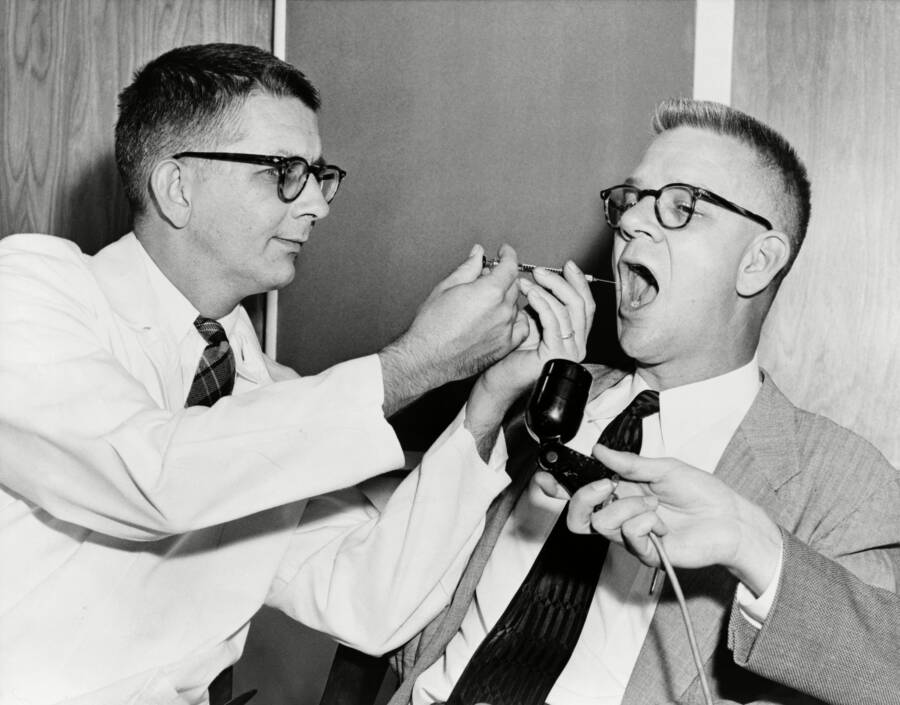

Getty ImagesA doctor squirts LSD into the mouth of another doctor as part of project MK Ultra’s mind-control experiments.
What’s more, these experiments often used unwitting subjects who were left with permanent psychological damage.
Unsurprisingly, the CIA conducted the project with the utmost secrecy, even giving it multiple code names. And when it finally ended in the 1970s, most of the records pertaining to it were destroyed on the orders of the director of the CIA himself — that is, all but a small misfiled cache accidentally left intact.
Eventually, those documents and several government investigations helped bring the project to light. Today, the public even has access to some 20,000 documents concerning project MK Ultra’s mind-control experiments.
But even this provides only a small window into what is perhaps one of the largest and most heinous government programs and cover-ups in American history.
The Birth Of Project MK Ultra At The Height Of The Cold War


Wikimedia CommonsThe MK Ultra program also operated under the cryptonyms MKNAOMI and MKDELTA. The “MK” indicated that the project was sponsored by the Technical Services Staff of the CIA and “Ultra” was a nod to the codename that had been used for classified documents during World War II.
As the Cold War moved into its peak era in the early 1950s, the American intelligence community grew increasingly obsessed with the growing technological advancements of the Soviet Union.
The U.S. government feared, in particular, that it was already falling behind the Soviet Union in regard to novel interrogation techniques. Reports during the Korean War (which later proved erroneous) suggested that North Korean and Soviet forces had developed mind-control capabilities and the U.S. couldn’t let them have that advantage.
Thus, on April 13, 1953, then-director of the nascent CIA Allen Welsh Dulles sanctioned project MK Ultra. The program was quickly headed by chemist and poison expert Sidney Gottlieb, who was known in covert circles as the “Black Sorcerer.”
One of Gottlieb’s original goals was to create a truth serum that could be used against Soviet spies and prisoners of war in order to gain intelligence.
Unsurprisingly, perhaps, generating a truth serum proved difficult. Instead, researchers believed that a kind of mind control could be achieved by placing the subject in a heavily altered mental state — typically with the help of wildly experimental drugs.
According to journalist Stephen Kinzer, Gottlieb realized that in order to control the mind, he’d have to wipe it first. “Second, you had to find a way to insert a new mind into that resulting void,” Kinzer explained. “We didn’t get too far on number two, but he did a lot of work on number one.”
In Gottlieb’s own words, project MK Ultra’s mind experiments extensively researched extensively how drugs could “enhance the ability of individuals to withstand privation, torture and coercion,” as well as “produce amnesia, shock and confusion.”
A declassified document from 1955 added that MK Ultra sought to observe “materials which will cause the victim to age faster/slower in maturity” and “substances which will promote illogical thinking and impulsiveness to the point where the recipient would be discredited in public.”
With these goals in mind, project MK Ultra scientists began devising mind-altering experiments with insidious goals — and disastrous results.
How Did MK Ultra’s Mind-Control Experiments Work?
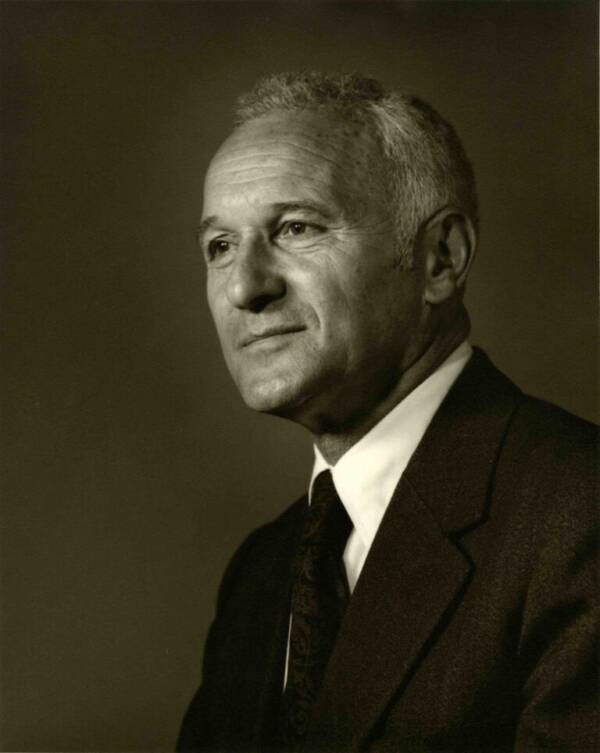

CIASidney Gottlieb, the man who oversaw all of the project MK Ultra mind-control experiments.
From the beginning, MK Ultra’s mind-control experiments were conducted with great secrecy in part because the CIA was well aware of the dubious ethics involved. For secrecy’s sake, the program’s 162 experiments were spread out across multiple cities, college campuses, prisons, and hospitals. In total, 185 researchers were involved — and many of them didn’t even know that their work was meant for the CIA.
In all of these dozens of settings, the primary experimental method often involved administering large quantities of various mind-altering substances in hopes of wiping the human mind in the way Gottlieb wanted to.
Subjects were dosed with LSD, opioids, THC, and the synthetic government-created super hallucinogen BZ, as well as widely available substances such as alcohol. Researchers would also sometimes administer two drugs with opposite effects (such as a barbiturate and an amphetamine) simultaneously and observe their subjects’ reactions, or give subjects already under the influence of alcohol a dose of another drug like LSD.
Aside from drugs, researchers also used hypnosis, often in an effort to create fear in subjects that could then be exploited to gain information. Researchers went on to investigate the effects of hypnosis on the results of polygraph tests and its implications for memory loss.


Wikimedia CommonsDonald E. Cameron, who had been present at the Nuremberg Trials as a psychiatric evaluator for leading Nazi Rudolf Hess, was one of the lead researchers in MK Ultra’s mind experiments.
MK Ultra participants were also subjected to experimentation involving electroconvulsive therapy, aural stimulation, and paralytic drugs.
Meanwhile, experimenter Donald Cameron (the first chairman of the World Psychiatric Association and the president of the American and Canadian psychiatric associations) drugged patients and repeatedly played tapes of noises or suggestions while they were comatose for long periods of time, hoping to correct schizophrenia by erasing memories in order to reprogram subjects’ minds.
In reality, these tests left his subjects comatose for months at a time and permanently suffering from incontinence and amnesia.
John C. Lilly, a noted animal behaviorist, was also involved in the experiments. For his research in human communication with dolphins, he created the first sensory deprivation flotation tank. MK Ultra scientists commissioned the tank to create a sensory-free environment for their subjects to experience their acid trips without the stimuli of the outside world.
With such an arsenal of tools at their disposal, the project MK Ultra mind-control experiments succeeded in severely disrupting the human mind, but at great cost to its unwitting subjects.
Who Were The Subjects Of These Ghastly Experiments?
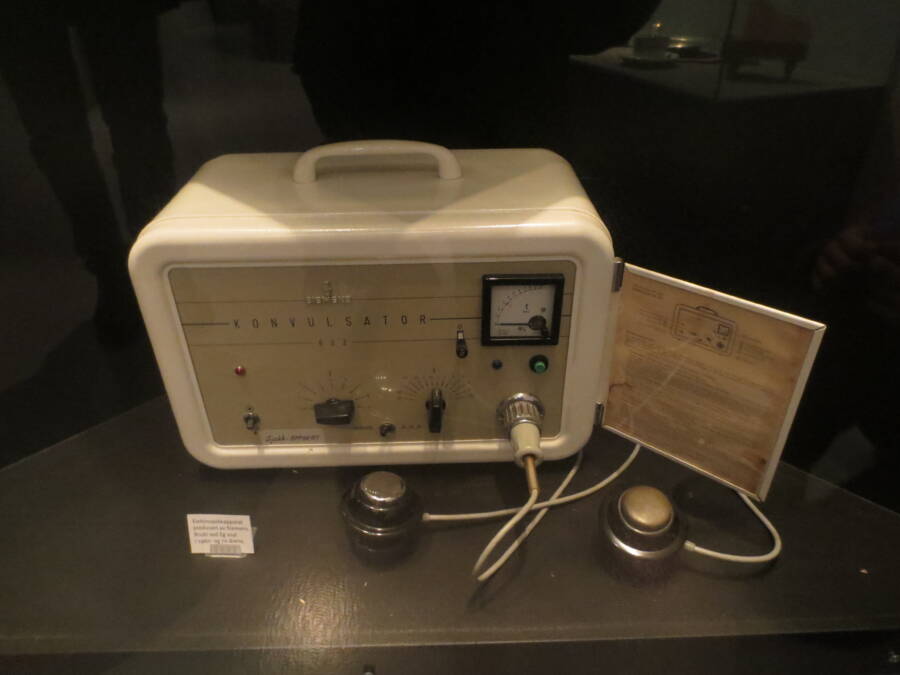

Wikimedia CommonsAn electroconvulsive machine used during the experiments.
Due to the classified nature of the program, many of the test subjects were unaware of their involvement and Gottlieb admitted that his team targeted “people who could not fight back.” These included drug-addicted prisoners, marginalized sex workers, and both mental and terminal cancer patients.
Some of the subjects of MK Ultra were volunteers or paid students. Others were addicts who were bribed with the promise of more drugs if they participated.
Though many of MK Ultra’s records were destroyed, there are a few notable documented subjects, including: Ken Kesey, author of One Flew Over the Cuckoo’s Nest; Robert Hunter, a lyricist for the Grateful Dead; and James “Whitey” Bulger, a notorious Boston mob boss.
Some participants were voluntarily vocal about their involvement. Kesey, for example, was an early volunteer and joined the project while he was a student at Stanford University to be observed while taking LSD and other psychedelic drugs.
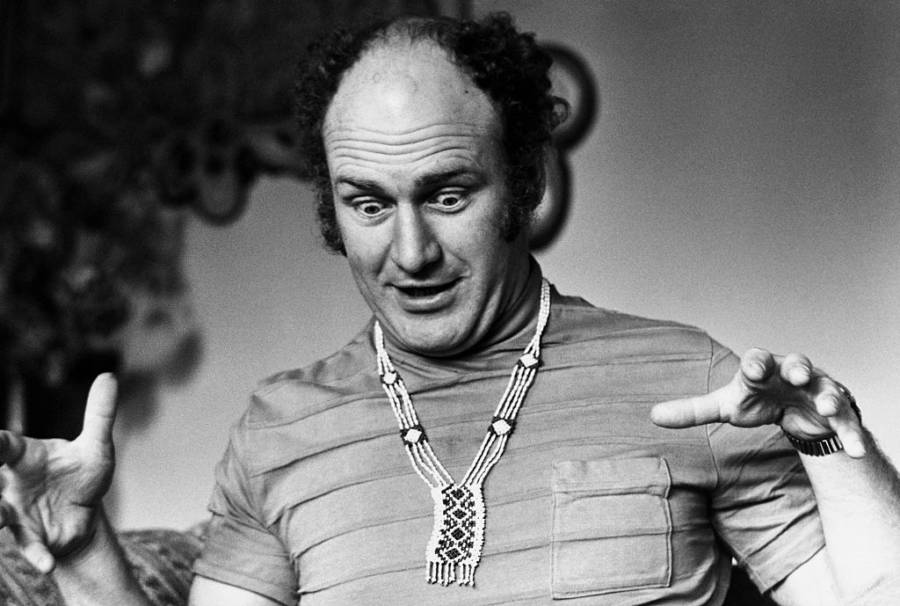

Hulton-Deutsch/Hulton-Deutsch Collection/Corbis via Getty ImagesKen Kesey’s experience with MK Ultra in part inspired the writing of his seminal work, One Flew Over The Cuckoo’s Nest.
His experience was, according to him, a positive one and he went on to publicly promote the drug. One Flew Over The Cuckoo’s Nest was also, in part, inspired by his experiences.
Unlike Kesey, however, some participants did not have such positive experiences.
The Horrors Experienced By The Participants
Untold numbers of MK ULtra subjects were subjected to chilling abuses in the name of science. In one experiment, an unwitting mental patient in Kentucky was given a dose of LSD every day for 174 consecutive days. Elsewhere, Whitey Bulger reported that he would be dosed with LSD, monitored by a physician, and repeatedly asked leading questions like: “Would you ever kill anyone?” He later suggested that his murderous career as a crime lord was partially brought on by his participation in MK Ultra’s mind-control experiments.
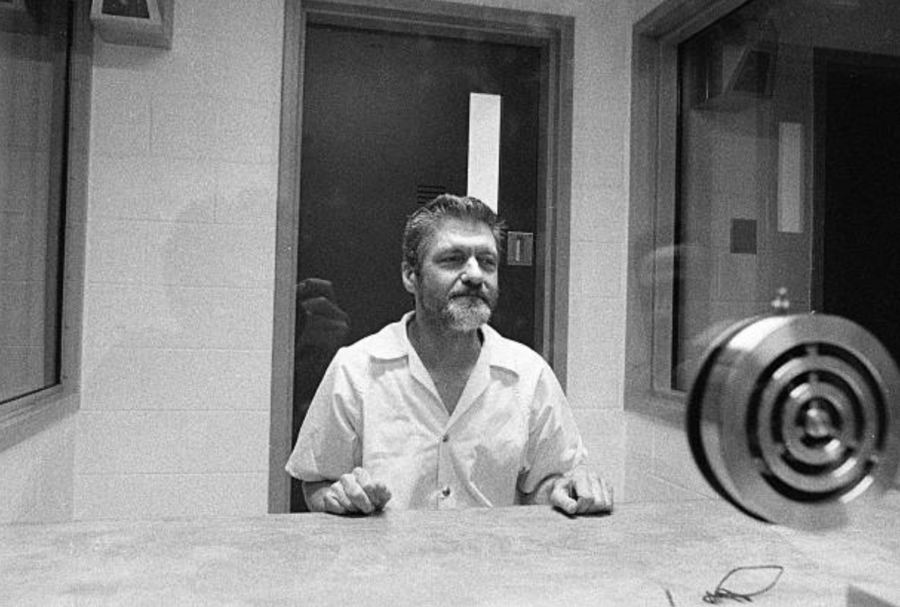

Internet ArchiveAlleged MK Ultra subject Ted Kaczynski in prison, 1999.
Unabomber Ted Kaczynski may also have been involved as a subject in the MK Ultra mind experiments conducted at Harvard in the early 1960s.
Another undocumented but suspected participant was the infamous Charles Manson, convicted of ordering a string of brutal Los Angeles murders that shocked the nation in 1969.
According to author Tom O’Neill in Chaos: Charles Manson, the CIA, and the Secret History of the Sixties, Manson not only had people in his circle later connected to the CIA, but the way in which he ran his cult, by doping his followers with a constant flow of LSD, was oddly similar to the kinds of experiments carried out by MK Ultra.
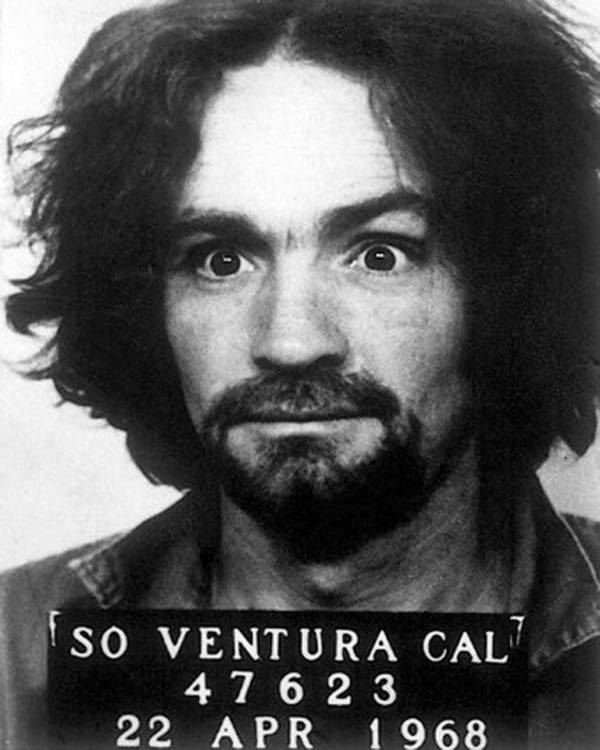

Wikimedia CommonsCharles Manson’s 1968 mugshot.
The unsuspecting subjects of MK Ultra weren’t all civilians, though; some of them were CIA operatives themselves. Gottlieb claimed that he wanted to study the effects of LSD in “normal” settings — and so he began to administer LSD to CIA officials without warning.
The experiments continued for over a decade even after an Army scientist, Dr. Frank Olson, began to suffer from drug-induced depression and jumped out a 13th-story window right at the project’s outset in 1953.
For those who survived, the fallout of the experiments included things like depression, anterograde and retrograde amnesia, paralysis, withdrawal, confusion, disorientation, pain, insomnia, and schizophrenic-like mental states as a result of the experiments. Long-term effects like these largely went untreated and unreported to authorities.
How MK Ultra’s Mind-Control Experiments Finally Came To Light
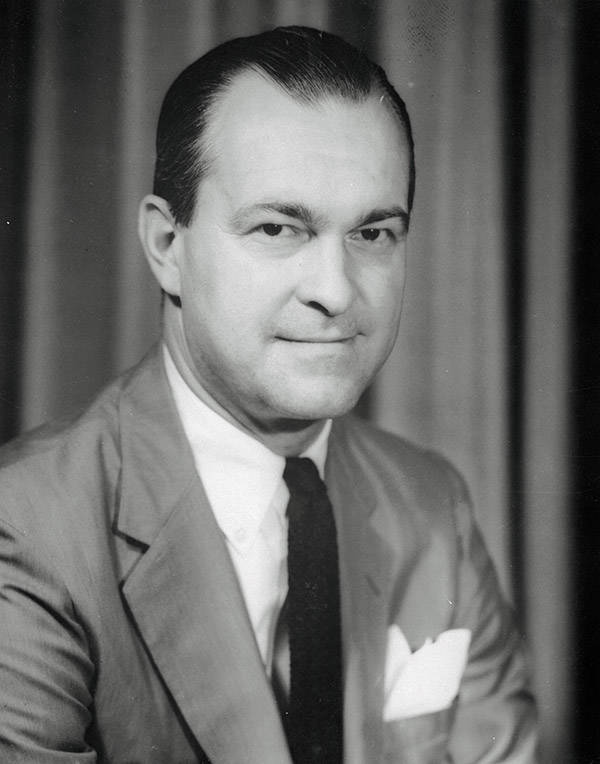

Bettmann/Contributor/Getty ImagesCIA Director Richard Helms.
In early 1973, in the aftermath of the Watergate scandal, CIA director Richard Helms ordered all MK Ultra files destroyed. He feared that all government agencies would be investigated and he would not risk a breach of information on such a controversial topic. But in 1975, President Gerald R. Ford commissioned an investigation into CIA activities, hoping to eradicate conspiracies within the organization. Two committees spawned from the investigation: the Church Committee of the U.S. Congress and the Rockefeller Commission.
The overall investigation revealed that Helms had destroyed most of the evidence regarding MK Ultra, but that same year, a collection of 8,000 documents were discovered in a financial records building and later released under a Freedom of Information Act request in 1977.
When the remaining documents were made available to the public, the Senate launched a collection of hearings on the ethics of the project later that year. Survivors soon filed lawsuits against the CIA and the federal government regarding informed consent laws. In 1992, 77 form MK Ultra participants were awarded a settlement, though many more were denied any retribution because of how difficult it was for them to prove definitively that these secret experiments caused their mental anguish.
In 2018, the families of a group of ex-patients filed a class-action lawsuit against the provincial and federal governments of Canada for the experiments Dr. Cameron ran on their loved ones in the 1960s.
Since the documents were revealed, countless shows and movies have been inspired by project MK Ultra’s mind-control experiments, most notably The Men Who Stare at Goats, the Jason Bourne series, and Stranger Things.
The government does not deny that the MK Ultra experiments took place — but most of what transpired remains a mystery. It has admitted that the experiments took place across 80 institutions and often on unwitting subjects. But most of the discussion surrounding the experiments today comes from conspiracy theorists. The CIA is adamant that the experiments ceased in 1963 and that all related experiments were abandoned. Due to the destruction of records, the secrecy surrounding the project, and its various, ever-changing code names, conspiracy theorists aren’t so sure.
Some of them even believe that the experiments are still taking place today. There is, of course, no way to be sure.
After learning about project MK Ultra’s mind-control experiments, read up on the CIA’s remote viewing experiments. Then, learn about other terrifying science experiments throughout history.


